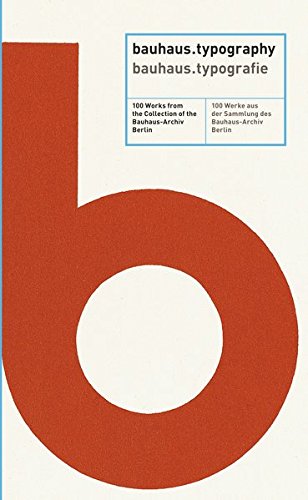bauhaus.typography
The Bauhaus-Archiv / Museum für Design in Berlin has one of the largest collections of typographical works from the Bauhaus. The selected works deliver insight into this rich collection and illustrates the versatile possibilities and multifaceted handling of this medium at the Bauhaus.
The Bauhaus - probably the most important avant-garde school of the twentieth century, founded in 1919 by the architect Walter Gropius in Weimar, relocated to Dessau in 1925 and closed in 1933 in Berlin under pressure from the Nazi Regime - offers numerous points of reference to all those interested in architecture and Design. At the Bauhaus workshops modern objects were created for a new lifeworld, from everyday objects to residential buildings. More than a few designs, especially in furniture and architecture, gained historical significance.
Typography played an important role in the founding of the Bauhaus. Still influenced by the expressive-calligraphic imagery of Johannes Itten in the early years, the Bauhaus contributed to the spread of the so-called New Typography, in particular through the teachers László Moholy-Nagy, Herbert Bayer and Joost Schmidt. Primarily used in self-promotion for the school and its products but also increasingly for commissioned work, the works are often characterized by a clear type area, the use of concise typographic signs, strong contrasts of color, size and position, standardized formats and the interpenetration of image and font.
bauhaus.typography, Bauhaus-Archiv Berlin and Patrick Rössler (ed.), Knesebeckverlag 2017.
ISBN: 9783922613596
